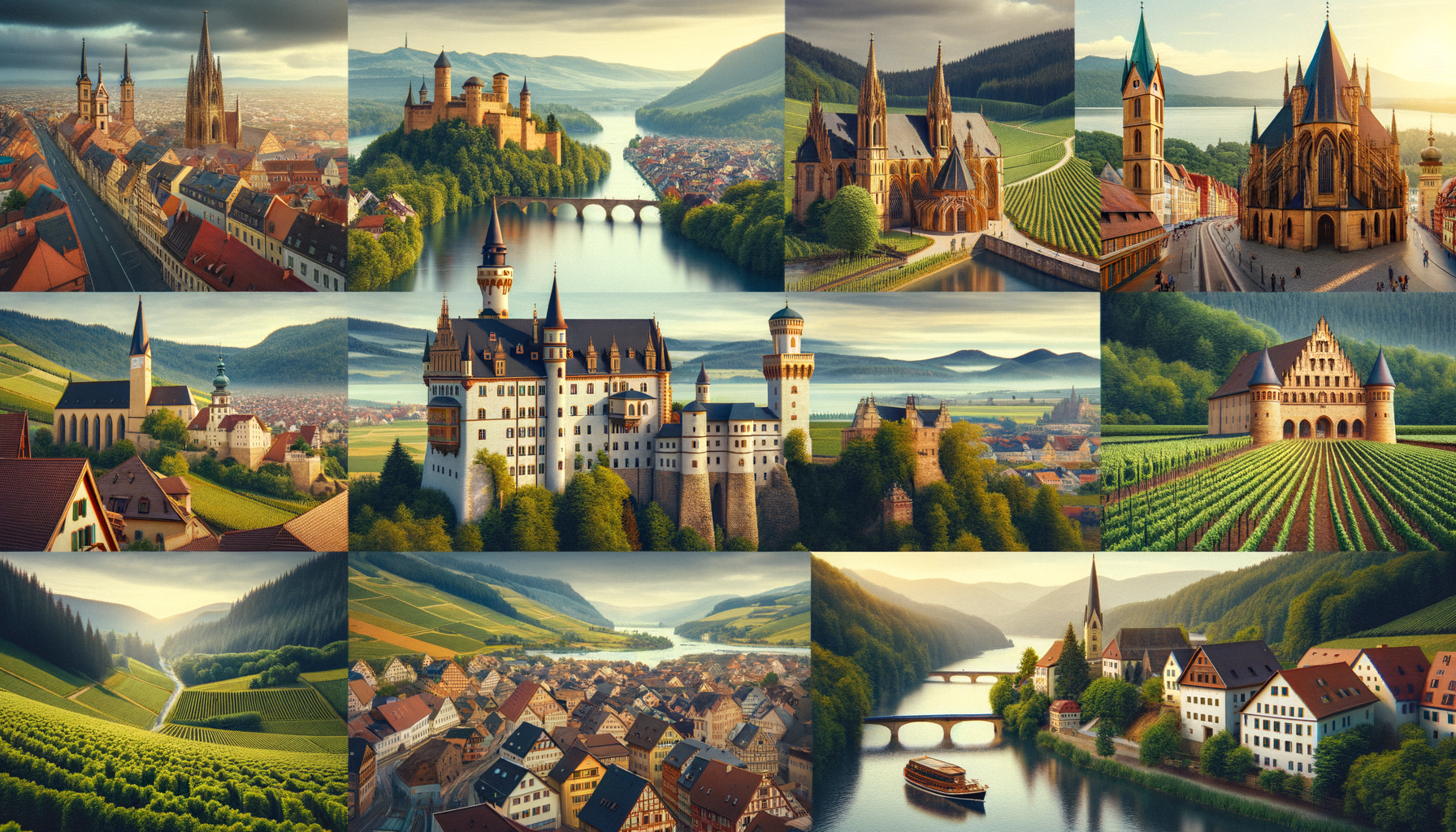Exploring the Charms of Travel in Germany: A Journey Through Culture, History, and Nature
Germany offers a rich tapestry of cultural, historical, and natural attractions, making it a captivating destination for travelers.

Germany’s Cultural Tapestry: A Blend of Tradition and Modernity
Germany is a country where the past and the present coexist harmoniously, offering travelers a unique blend of tradition and modernity. From the timber-framed houses of Rothenburg ob der Tauber to the futuristic architecture of Berlin, Germany’s cultural landscape is as diverse as it is captivating. Visitors can explore the country’s rich history through its numerous museums and historical sites, such as the Berlin Wall Memorial and Neuschwanstein Castle. Moreover, Germany’s vibrant festivals, like Oktoberfest and the Berlin International Film Festival, showcase the country’s lively cultural scene.
Germany’s commitment to preserving its cultural heritage is evident in its numerous UNESCO World Heritage Sites. These sites, including the Cologne Cathedral and the Wadden Sea, offer a glimpse into the country’s historical and natural significance. Additionally, Germany’s cultural diversity is reflected in its regional customs and traditions, which vary from one region to another. Whether it’s the Bavarian culture in the south or the maritime traditions in the north, Germany’s cultural tapestry is a testament to its rich history and vibrant present.
Key highlights of Germany’s cultural offerings include:
- UNESCO World Heritage Sites: Germany is home to 51 UNESCO sites, each offering a unique insight into its cultural and natural heritage.
- Festivals and Events: Germany hosts numerous festivals throughout the year, celebrating everything from film to beer.
- Architectural Wonders: From medieval castles to modern skyscrapers, Germany’s architecture is a reflection of its diverse history.
The Historical Legacy of Germany: From Castles to Cathedrals
Germany’s history is as rich and varied as its landscapes, with a legacy that stretches from ancient Roman times to the present day. The country’s historical sites offer a window into its past, with each landmark telling a story of its own. Castles like Neuschwanstein and Heidelberg stand as testaments to Germany’s medieval past, while the cathedrals of Cologne and Aachen showcase the country’s religious heritage.
The impact of the World Wars is also evident in Germany’s historical landscape. Memorials and museums dedicated to the events of the 20th century, such as the Dachau Concentration Camp Memorial Site and the Documentation Center Nazi Party Rally Grounds, provide poignant reminders of the past and serve as important educational resources. These sites not only commemorate the victims but also promote understanding and reconciliation.
Germany’s commitment to preserving its historical legacy is further highlighted by its numerous museums and galleries, which house extensive collections of art and artifacts. The Museum Island in Berlin, a UNESCO World Heritage Site, is home to five world-renowned museums, each offering a unique perspective on history and culture.
Key historical attractions in Germany include:
- Neuschwanstein Castle: Often referred to as the “fairy tale castle,” it is one of the most popular tourist destinations in Europe.
- Cologne Cathedral: A masterpiece of Gothic architecture and a symbol of German Catholicism.
- Museum Island, Berlin: A cultural and historical hub with collections spanning from ancient to modern times.
Germany’s Natural Beauty: From the Alps to the North Sea
Germany’s natural beauty is as diverse as its cultural and historical heritage, offering a wide range of landscapes for travelers to explore. From the towering peaks of the Bavarian Alps to the serene beaches of the North Sea, Germany’s natural wonders are a testament to its geographical diversity.
The Black Forest, with its dense woodlands and picturesque villages, is a popular destination for hikers and nature enthusiasts. The region is also famous for its cuckoo clocks and traditional German cuisine, making it a must-visit for those seeking an authentic experience. Meanwhile, the Rhine Valley, with its rolling vineyards and charming towns, offers a scenic backdrop for river cruises and wine tours.
Germany’s commitment to conservation is evident in its numerous national parks and nature reserves, which protect its unique ecosystems and biodiversity. The Wadden Sea, a UNESCO World Heritage Site, is one of the world’s largest tidal flats and a haven for migratory birds. The Bavarian Forest National Park, Germany’s oldest national park, is home to a diverse range of flora and fauna, offering visitors the chance to reconnect with nature.
Highlights of Germany’s natural attractions include:
- The Bavarian Alps: A paradise for outdoor enthusiasts, offering skiing, hiking, and breathtaking views.
- The Black Forest: Known for its dense forests, charming villages, and traditional crafts.
- The Wadden Sea: A unique coastal ecosystem and a UNESCO World Heritage Site.



